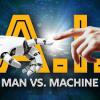
Breaking News
6.8 SPC vs. 300 Blackout: Powering Up the AR Platform
 Autism Study By McCullough Foundation Begins New Era of Free Scientific Inquiry
Autism Study By McCullough Foundation Begins New Era of Free Scientific Inquiry
 REVOLUTION DAY 8: Libertarians JOIN The Revolution
REVOLUTION DAY 8: Libertarians JOIN The Revolution
 US Government and Westinghouse $80bn Nuclear Reactor Deal
US Government and Westinghouse $80bn Nuclear Reactor Deal
Top Tech News
 Graphene Dream Becomes a Reality as Miracle Material Enters Production for Better Chips, Batteries
Graphene Dream Becomes a Reality as Miracle Material Enters Production for Better Chips, Batteries
 Virtual Fencing May Allow Thousands More Cattle to Be Ranched on Land Rather Than in Barns
Virtual Fencing May Allow Thousands More Cattle to Be Ranched on Land Rather Than in Barns
 Prominent Personalities Sign Letter Seeking Ban On 'Development Of Superintelligence'
Prominent Personalities Sign Letter Seeking Ban On 'Development Of Superintelligence'
 Why 'Mirror Life' Is Causing Some Genetic Scientists To Freak Out
Why 'Mirror Life' Is Causing Some Genetic Scientists To Freak Out
 Retina e-paper promises screens 'visually indistinguishable from reality'
Retina e-paper promises screens 'visually indistinguishable from reality'
 Scientists baffled as interstellar visitor appears to reverse thrust before vanishing behind the sun
Scientists baffled as interstellar visitor appears to reverse thrust before vanishing behind the sun
 Future of Satellite of Direct to Cellphone
Future of Satellite of Direct to Cellphone
 Amazon goes nuclear with new modular reactor plant
Amazon goes nuclear with new modular reactor plant
 China Is Making 800-Mile EV Batteries. Here's Why America Can't Have Them
China Is Making 800-Mile EV Batteries. Here's Why America Can't Have Them
Spinning Membrane Space Telescopes Would Be Big, Cheap and Easy

A demonstration cubesat EST could have an aperture larger than the Webb Space Telescope. The Webb Space Telescope has a 6.5-meter mirror and costs over $10 billion.
The EST employs a hoop to deploy a slack reflector membrane, such as solar sail material or radio dish. The EST is simultaneously rotated around its center and accelerated along its axis of rotation, the membrane will assume a parabolic shape, thereby creating a reflector for a very large aperture telescope. The EST reflector can be accelerated along its linear axis by tethering its deployment hoop to a tug spacecraft.
Linear acceleration will shape the telescope membrane into a parabola.
A little demonstration EST, with a total mass less than 20 kg, including optics that would be positioned along or suspended from the tether at the parabola focal point, would have four times the light gathering capacity of Webb (about thirty times that of Hubble), while costing on the order of 1/1000th as much.

 China Innovates: Transforming Sand into Paper
China Innovates: Transforming Sand into Paper

